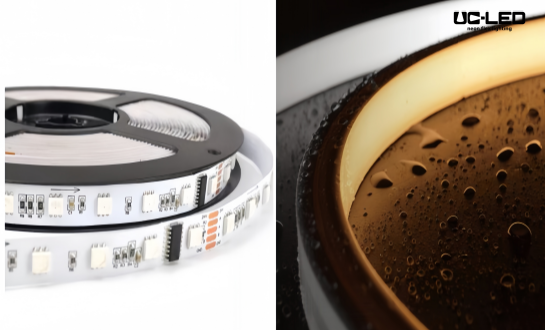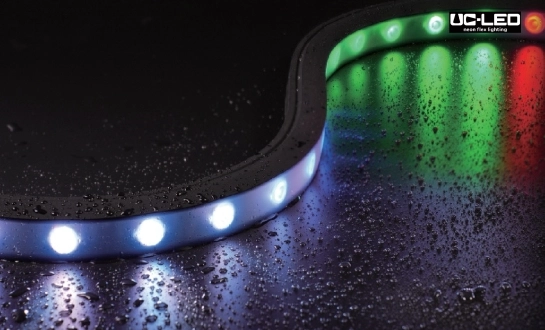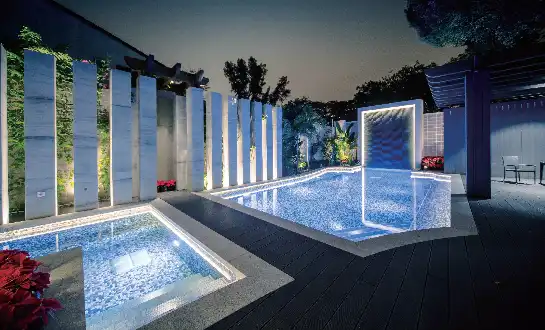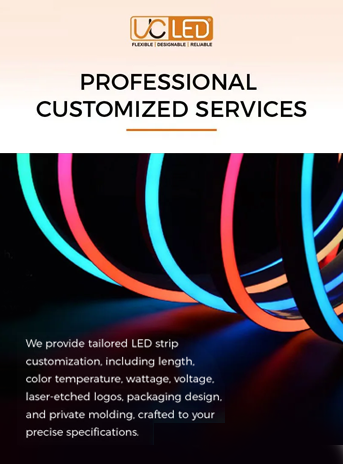The Ultimate Guide to Flexible LED Light Strip Installation Methods
Flexible LED strip lights have revolutionized the world of interior and exterior lighting, offering versatile and energy-efficient illumination solutions for various applications. This comprehensive guide will walk you through the essential installation methods for flexible LED strip lights, ensuring you achieve optimal results for your lighting projects. From surface preparation to power supply considerations, we'll cover everything you need to know to create stunning lighting effects in your home, office, or commercial space.

Preparing for Installation: Essential Steps and Considerations
Surface Preparation and Cleaning
Before diving into the installation process, it's crucial to properly prepare the surface where you'll be mounting your flexible LED strip lights. Start by thoroughly cleaning the area with a mild detergent and water solution, removing any dust, dirt, or grease that could impede adhesion. For stubborn residues, use isopropyl alcohol to ensure a pristine surface. Once cleaned, allow the area to dry completely before proceeding.
Next, inspect the surface for any irregularities or damage that might affect the installation. Smooth out any rough spots with fine-grit sandpaper and repair any cracks or holes. For optimal results, choose a flat, even surface that will provide maximum contact area for the adhesive backing of your LED strips.
Measuring and Cutting
Accurate measurements are paramount for a successful flexible LED strip light installation. Use a tape measure to determine the exact length needed for your project, and mark the cutting points on the strip. Most LED strips feature designated cutting marks, typically occurring every few inches. When cutting, use sharp scissors or a utility knife, and make clean, perpendicular cuts to avoid damaging the circuitry.
It's important to note that while flexible LED strips can be cut to size, they can only be cut at specific points. Cutting between these designated areas can damage the strip and render it inoperable. If you need a custom length that falls between cutting points, it's better to cut the strip slightly longer and coil any excess at the end of your installation.
Power Supply and Voltage Considerations
Selecting the appropriate power supply is crucial for the performance and longevity of your flexible LED strip lights. First, determine the total wattage required by multiplying the wattage per meter of your LED strip by the total length you plan to install. Choose a power supply that can handle this wattage, plus an additional 20% for safety margin.
Consider the input voltage of your LED strips as well. Most flexible LED strips operate on 12V or 24V DC power, so ensure your power supply matches this requirement. For longer runs of LED strips, a 24V system may be preferable as it experiences less voltage drop over distance.
Installation Techniques for Various Surfaces and Applications
Direct Adhesive Application
The most straightforward method for installing flexible LED strip lights is using their built-in adhesive backing. Begin by peeling off a small section of the protective film, aligning the strip at your starting point, and pressing it firmly into place. Gradually remove more of the backing as you go, applying consistent pressure to ensure good adhesion.
For best results, use a roller or squeegee to eliminate any air bubbles and maximize contact between the adhesive and the mounting surface. This method works well on clean, smooth surfaces like drywall, wood, or metal. However, for textured or porous surfaces, you may need additional mounting solutions.
Mounting Channels and Diffusers
For a more professional and polished look, consider using aluminum mounting channels designed specifically for flexible LED strip lights. These channels not only provide a sleek appearance but also offer several practical benefits:
- Heat dissipation: Aluminum channels help dissipate heat, prolonging the lifespan of your LEDs.
- Protection: Channels shield the strips from dust, moisture, and physical damage.
- Light diffusion: Many channels come with frosted covers that soften and evenly distribute the light output.
- Easy maintenance: Channels allow for easy removal and replacement of LED strips if needed.
To install using channels, first secure the channel to your surface using screws or a strong adhesive. Then, carefully insert the flexible LED strip into the channel, ensuring it's seated properly. Finally, snap on the diffuser cover to complete the installation.
Specialized Mounting for Unique Surfaces
Some installation scenarios may require creative solutions. For uneven or challenging surfaces, consider these specialized mounting techniques:
- Silicone sleeve encapsulation: For outdoor or wet environments, use waterproof silicone sleeves to protect your LED strips.
- Magnetic mounting: Attach small magnets to the back of your LED strips for easy installation on metal surfaces.
- Zip tie mounts: Use small zip tie mounts with adhesive backs for securing LED strips in areas where traditional adhesive may not hold.
- Corner connectors: For installations around sharp corners or angles, use flexible corner connectors to maintain a continuous light line without damaging the strip.
Troubleshooting and Maintenance Tips for Long-lasting Performance
Common Installation Issues and Solutions
Even with careful planning, you may encounter some challenges during or after installation. Here are some common issues and their solutions:
- Strips not adhering properly: Clean the surface again and use a primer designed for LED strip adhesion.
- Uneven lighting or dark spots: Check for loose connections or damaged sections of the strip. Replace if necessary.
- Flickering lights: Verify that your power supply is adequate for the total wattage of your installation.
- Color inconsistency: Ensure all strips are from the same batch or use a controller to calibrate colors across multiple strips.
Maintenance and Cleaning
To keep your flexible LED strip lights performing optimally, regular maintenance is key:
- Dust regularly: Use a soft, dry cloth or compressed air to remove dust from the strips and any mounting channels.
- Check connections: Periodically inspect all connections, including power supply and any joiners or connectors used in your installation.
- Monitor temperature: Feel the strips during operation to ensure they're not overheating. If they are, consider additional cooling measures.
- Clean gently: For tougher dirt, use a slightly damp cloth with mild soap. Avoid harsh chemicals that could damage the LEDs or their coating.
Extending Lifespan and Efficiency
To maximize the longevity and efficiency of your flexible LED strip lights:
- Use dimmers: Implementing a dimming system not only provides mood lighting but also reduces power consumption and heat generation.
- Implement smart controls: Use smart controllers to automate your lighting, reducing unnecessary usage and extending LED life.
- Ensure proper ventilation: If using in enclosed spaces, provide adequate ventilation to prevent heat buildup.
- Consider heat sinks: For high-power installations, additional heat sinks can help maintain optimal operating temperatures.
Conclusion
Mastering the installation of flexible LED strip lights opens up a world of creative lighting possibilities. By following the methods and tips outlined in this guide, you'll be well-equipped to tackle any LED strip lighting project with confidence. Remember, proper preparation, careful installation, and regular maintenance are key to achieving stunning, long-lasting results. For more information on our range of flexible LED strip lights and custom lighting solutions, don't hesitate to contact us at Linda@uc-led.com.
References
1. Smith, J. (2022). "LED Strip Lighting: Installation Techniques and Best Practices". Illumination Engineering Society Journal, 45(3), 78-92.
2. Johnson, A. & Lee, S. (2021). "Flexible LED Technology: Advancements and Applications". Journal of Lighting Design & Application, 18(2), 112-127.
3. Brown, R. (2023). "Energy Efficiency in Modern Lighting: A Focus on LED Strip Solutions". Energy and Buildings, 267, 112751.
4. Thompson, E. (2022). "DIY LED Lighting Projects: From Basics to Advanced Installations". Maker's Handbook Series, Vol. 7. Hobbyist Press.
5. Garcia, M. & Patel, K. (2023). "Longevity and Performance Factors in LED Strip Lighting Systems". IEEE Transactions on Consumer Electronics, 69(2), 215-228.

Looking for high-quality LED flexible strips? Click for a free quote in 24 hours!

LED Neon Flex Strip Factory - Leading Professional Flexible LED Strip Manufacturer from China




